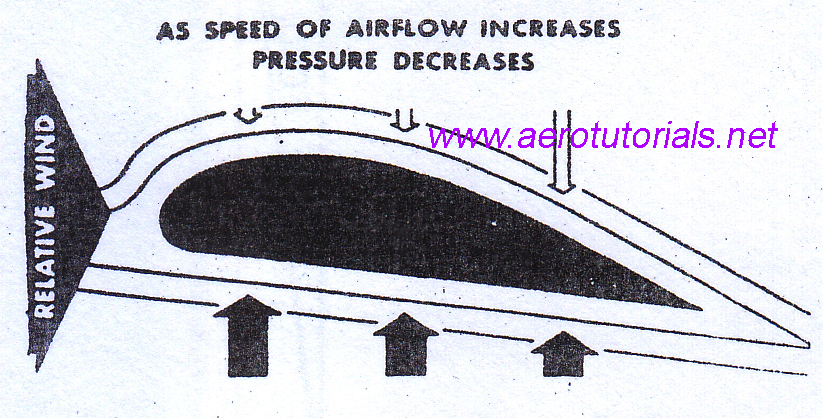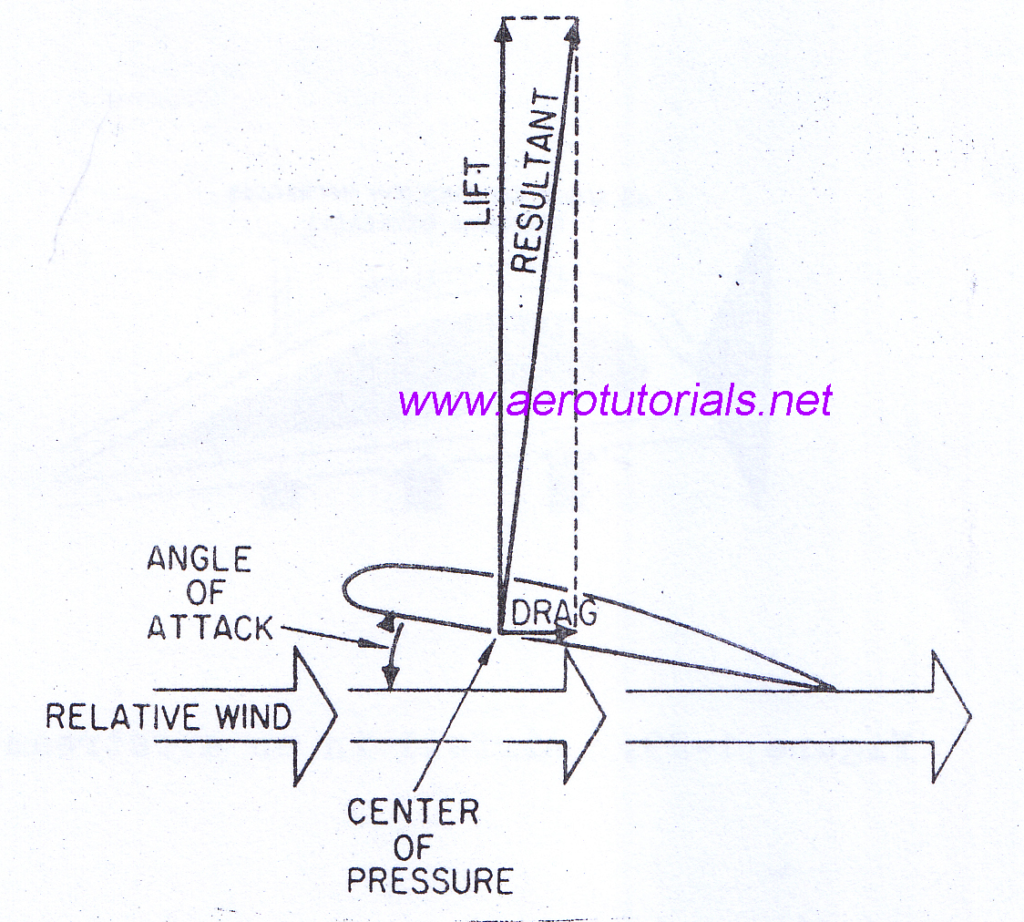Introduction to Aerodynamics and Airfoils.
An understanding of the basic principals of aerodynamic is as important to the aviation technician as well as to the pilot and the aerospace engineer. The technician is concerned with the strength of all structural members of and aircraft because of the stress applied through the forces of aerodynamics when aircraft is in flight. Often responsible for the repair or restoration of aircraft structures, the technician must know that the repair work will restore the required strength to the part or parts that are being repaired. Aerodynamics as explained here may also termed as theory of flight, because the flight of an aircraft depends upon to the law of aerodynamics. Aero means pertaining to air, aircraft, aviation or aeronautics. Dynamics is that branch of physics which considers bodies in motion and the forces that produce or change such motion. Aero is derived from the Greek word ‘aero’ meaning air, dynamics comes from the Greek word ‘dynamic’ meaning power Thus, we have aerodynamics meaning, the science relating to the effects produced by air or other gases in motion. Aerodynamics may also defined as that branch of dynamics which treats the motion of air and other gaseous fluids and the forces acting in motion relative to such fluids.

An airfoil is technically defined as any surface, such as an aileron, elevator, rudder or wing, designed to obtain reaction from the air through which it moves. An airfoil section is a cross section of an airfoil diagram display here. If the wing of an airplane were sawed through from the leading edge to the trailing edge, the side view of the section through the wing at that point would be its airfoil section. An airfoil profile is merely the outline or shape of an airfoil section through the leading edge to the trailing edge.
Laminar flow turbulence and Airfoil section.
It is common practice among aircraft people to use the word airfoil when “airfoil section” or perhaps “airfoil profile” is meant. The previous discussion of streamline flow, laminar flow, turbulence and the reaction of forces between the air stream and an object in its path is essential to any explanation of airfoils. A flat plate perpendicular to an air stream obtains reaction from the air through which it moves, but it is not useful as an airfoil because there is no lift and turbulence is excessive. When an airfoil is at an acute angle to the air stream, it is an airfoil because there is a lift. The flat plate is not an efficient airfoil, however, because of the excessive resistance resulting from the turbulence from the turbulence that accompanies the disturbed airflow. Likewise, a curved plate is not an efficient airfoil because of turbulence at a low angle of attack. As already mentioned, an efficient airfoil must have both curvature and thickness. Curvature directs the airflow downward and reduces the turbulence at the leading edge when the airfoil is at a high angle of attack. Thickness eliminates the turbulence occurring behind the leading edge of the simple curved plate and provides the internal bracing required in a modern airplane wing. Of course, the wing could be extremely braced, but this would create turbulence an cause drag. Referring to the above figure it will be observed that the particles of airflow over and under the airfoil and, in accordance with Bernaulli’s principle, the pressure decreases as the speed of the airfoil increases. Technically speaking, the relative wind is the velocity of the air with respect to a body in it. It is usually determined from measurements made at such a distance from the body that the disturbing effects of the body upon the air is negligible. In other words, the relative wind refers to the velocity of the air before it strike the leading edge of the airfoil and divides the flow around it. In calm, still air, the direction of the relative wind is opposite to the flight path of airplane with reference to the ground. When the wind blows, the path of the airplane referred to the ground usually is not the same as the path referred to the moving air.

The aerodynamic forces of the airplane are always considered as a function of the relative wind and of the grounded wind. The angle of attack can be defined more simply as the acute angle between the chord of an airfoil and the relative wind. Or the acute angle between a reference line in a body and the line of the relative wind direction. In NASA “Aeronautical Dictionary” the definition of angle of attack is the angle at which a body, such as the airfoil or Fuselage or a system of bodies such as a helicopter rotor, meets a flow, ordinarily measured between a reference line in the body and a line in the direction of the air flow or in the direction of the movement of the body. The relative wind, angle of attack, lift, drag, resultant and CP are the factors affecting airfoils according to the diagram.
Aircraft Technician Training
- Aircraft Brake Systems
- Aircraft Tabs
- Applications of Physics
- Bogie Undercarriages
- Classes of Landing Gear
- Retraction Tests
- Rigging Checks
- Types of Fuselages
- Wing Construction
Popular Posts
-
Aerotutorials Posts
Welcome to the Aerotutorials blog post page. If you have ideas and comments please choose a Category first start posting under any Title…
-
Applications of Physics
Introduction During the twentieth century, more progress has been made in Technology and Science than was made in all the previous centuries since the beginning of time. The Apollo program program has established the reality of travel between the earth and the moon and the possibility of establishing manned research stations on the surface of […]
-
Wing Construction
Conventional wings are of three general, monospar, two spar and multiple star. True stressed skin wings may have shear webs but no true “spars”. The monospar wing has only one spar, the two spar wing has two spars as the name indicates, and the multispar wing has more than two spars. A wing spar, sometimes […]
-
Types of Fuselages
In general, we can say that fuselages are classified in three principle types, depending upon the method by which stresses are transmitted to the structure. The three types according to this classification are truss, semimonocoque, and monocoque. A truss is an assemblage of members forming a rigid framework, which may consists of bars, beams, rods, […]
Center of Pressure
The point at which the aerodynamic forces may be considered concentrated is the CP. It is assumed to be on the Chord. From the cp are drawn vectors representing the Lift, Drag and resultant force. The location of the cp and direction in which the resultant will point depend upon the the center of the airfoil section and the angle of attack.
Area and Lift
Total Lift of an airfoil is the area of the surface exposed to air stream. If the arc is small the region of pressure differential is small and there is a little lift. On the other hand, if the area is greater, the region of pressure differential is greater and there is a large amount of lift.
Roll, Pitch and Yaw
When an aircraft in flight there are three basic movements that applies on the aircraft. They are Roll, Pitch and Yaw. The Roll is the movement of the aircraft Through Y-axis. The pitch is the movement of the aircraft through X-axis. The yaw is the movement of the aircraft between those two. It is a three dimensional movement. These three movements are controlled by ailerons, elevator and rudder. The roll is controlled by the ailerons, the pitch is controlled by the elevator and the yaw is controlled by the rudder.
